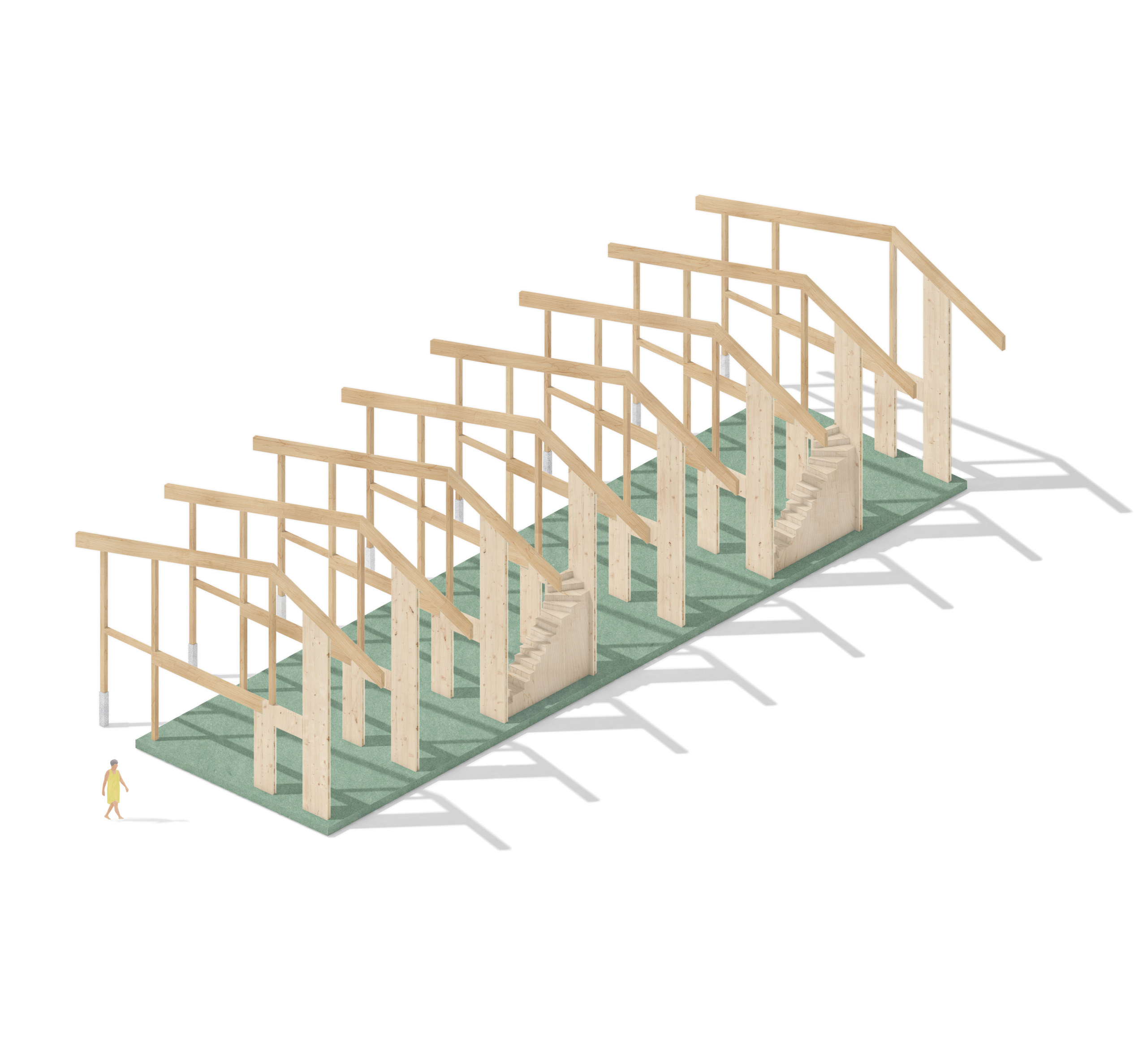386LAG
Program
Collective housing, Small scale intervention
Location
Chaumont-Gistoux
Date
2022
Themes
Rural, Renovation, Circular, Biobased
Phase
Ongoing
Surfaces
720 m²
Team
Karbon' architecture et urbanisme, Servais Engineering Architectural, Brouae
Client
Privé
Budget
An intergenerational cohousing project
The project concerns the design of a collective housing development consisting of four households.
The families behind this initiative share a desire to live differently—rethinking the way they inhabit space through a shared place, close to nature, and conducive to everyday interactions.
The environment is designed to foster connection between generations, within a human-scale setting built on cooperation, trust, and the willingness to share certain resources.
The housing units are compactly designed, optimizing private spaces while sharing several facilities.
Among the common areas, which are separate from the private homes, are a multipurpose hall, a workshop, cellars, a shared laundry room, bicycle parking, and technical installations.
This compact, shared layout encourages community living and contributes to more responsible use of space and resources.
Making the most of what's already there
The existing building is the starting point for this project.
It’s a small countryside house built between the 1970s and 1990s, made of red bricks and topped with fiber cement slates, located in the upper part of a large plot that slopes down to the Train river.
The project adds value to the existing site in two ways:
First, by reusing materials from the demolished structure, which are carefully dismantled and reintegrated into the new construction.
To meet programmatic and structural requirements, the above-ground portion of the house is to be demolished. A full inventory of available resources has identified materials suitable for reuse. Many recovered elements, including bricks, PVC window frames, sanitary equipment, and floor coverings, will be repurposed in the new design.
Second, the approach includes preserving the footprint of the existing building to minimize the new structure’s impact on the soil.
The central housing block is partially rebuilt on the existing cellar foundations. A second housing building is constructed as an extension of the first, and a shared hall is positioned at the entrance to the site.
The overall layout consists of three modestly-sized, aligned longhouses.
The two residential buildings, located in the center of the plot, each accommodate two households. This configuration reduces the total footprint of the development, ensures optimal landscape integration, and allows for a smooth connection between private access paths, outdoor areas, and communal spaces.


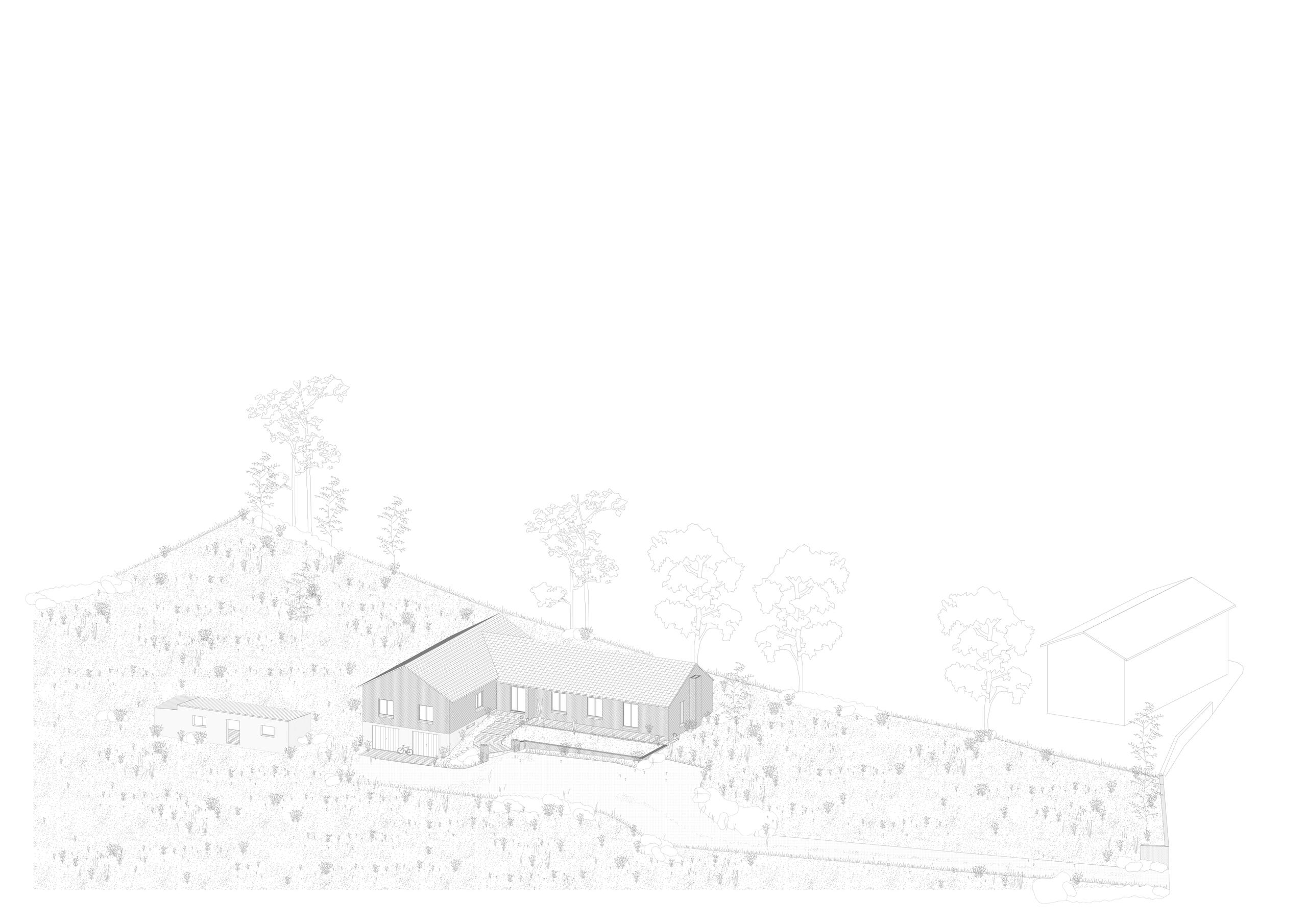
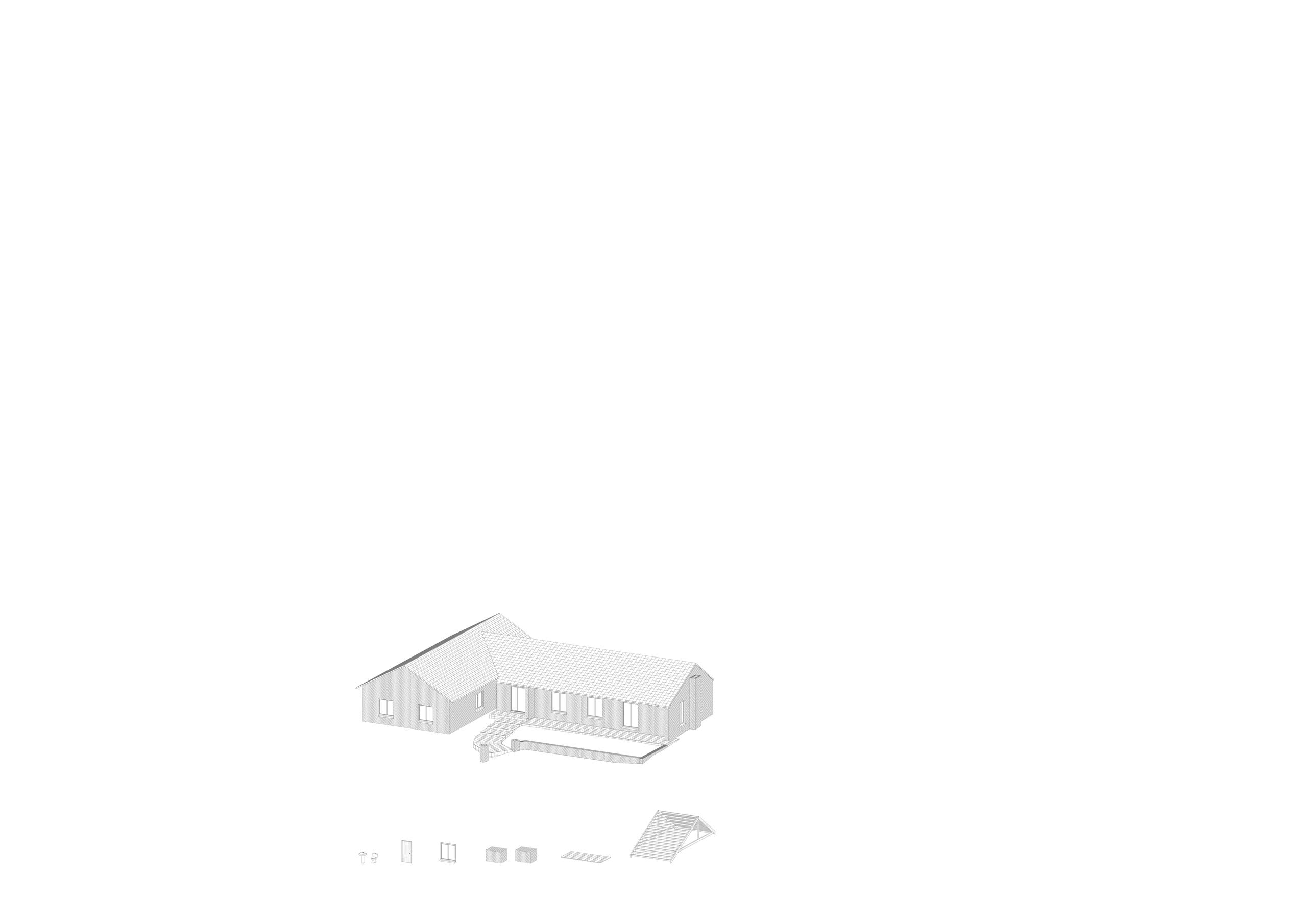


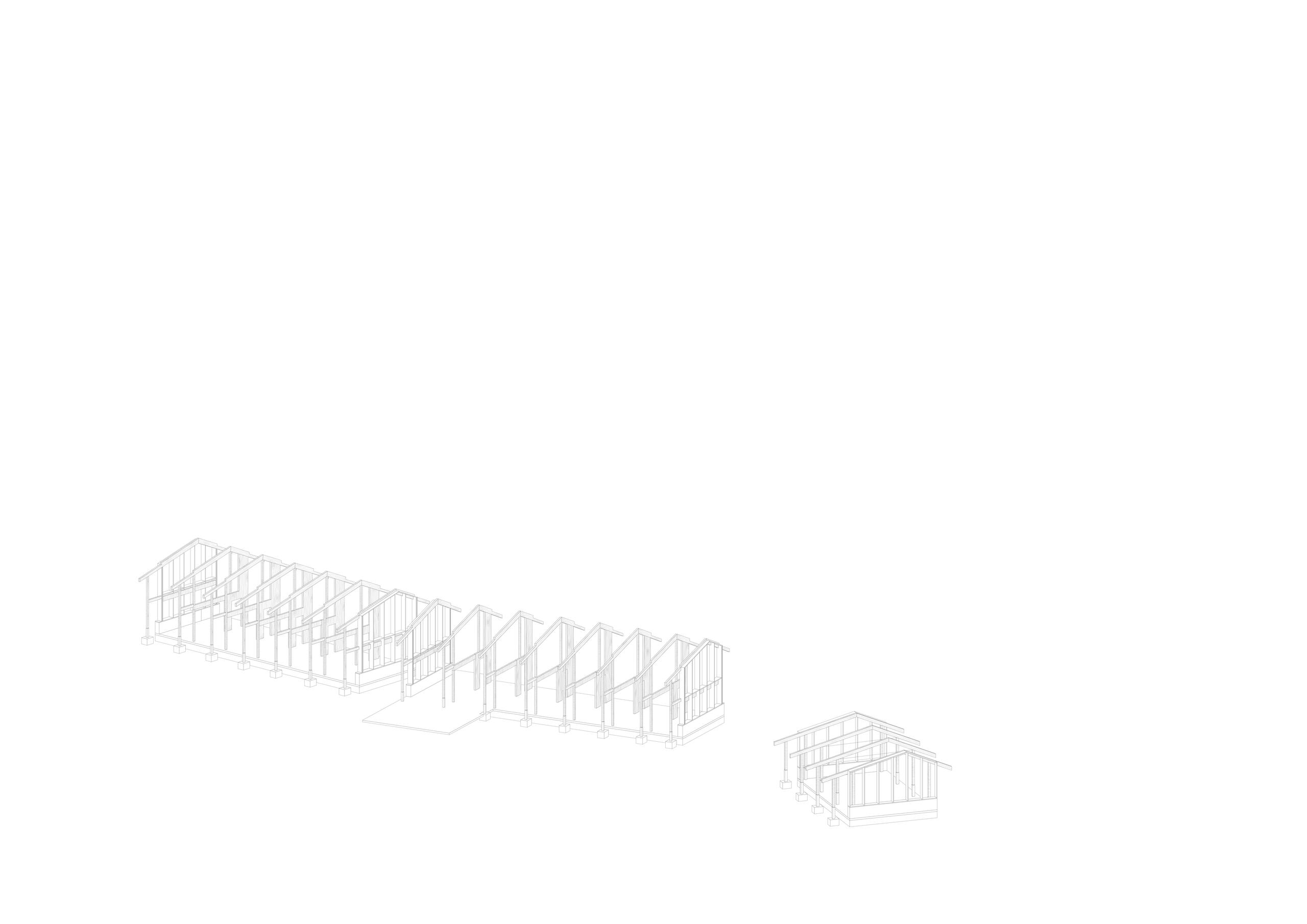
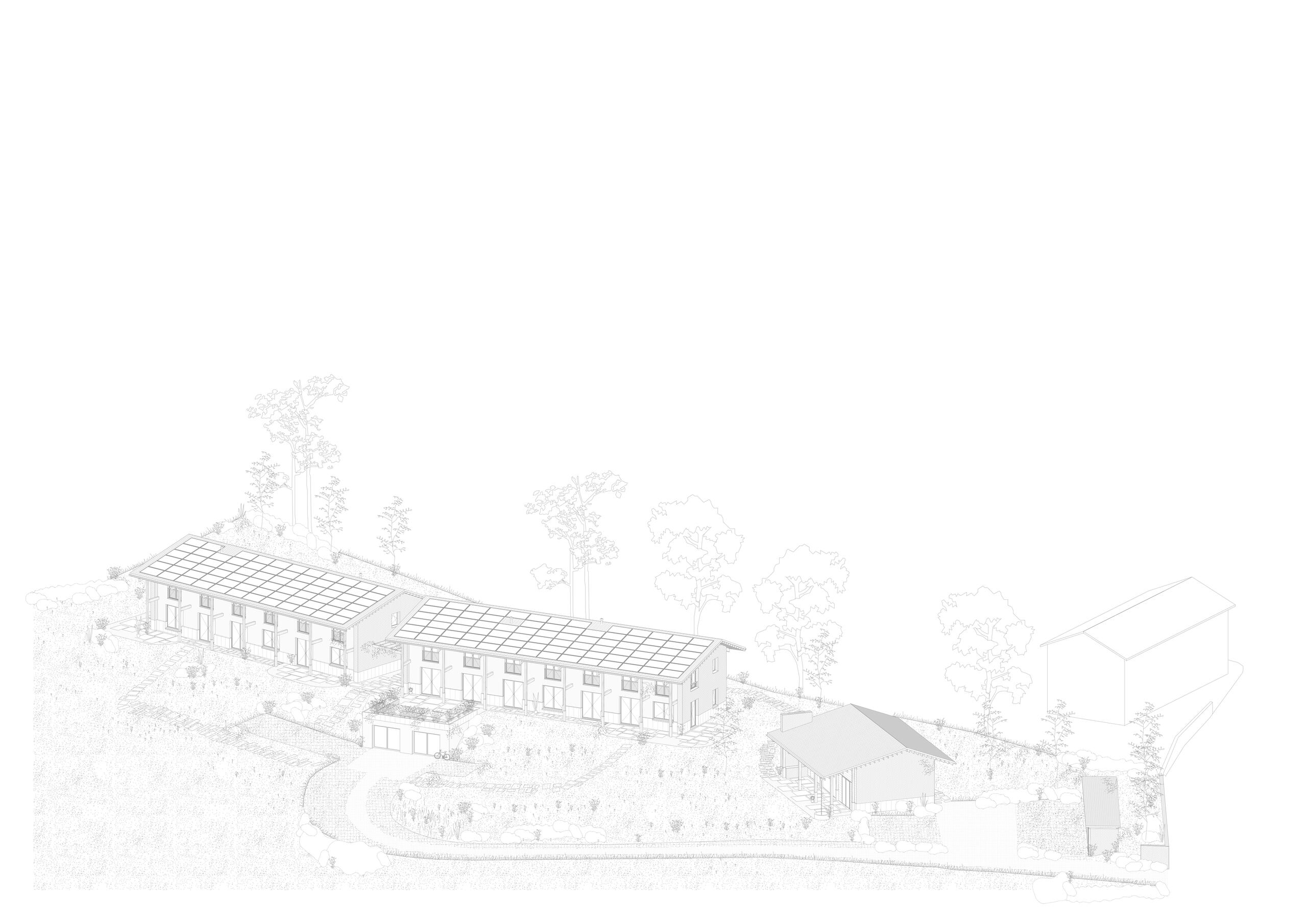
Energy and resource efficiency
The project follows a rational, efficient design approach.
Timber portal frames, arranged in a regular grid, form the primary structure of the buildings. These frames support two overhanging roofs that protect the long walls from heat and rain while creating sheltered outdoor spaces.
This structure results in a functional layout, with a technical strip at the rear and living areas facing the front, opening onto the valley.
In addition to reusing materials, the project prioritizes the use of bio-based and geo-based resources.
Wall insulation is made from straw, floor insulation from lime-hemp blocks, and roof insulation from cellulose fiber.
Exterior finishes use locally sourced, readily available materials: terracotta tiles, bricks, wooden frames, and stone slabs. Both interior and exterior plaster is made from raw earth.
Reducing environmental impact also extends to technical installations.
The homes are equipped with natural ventilation.
Underfloor heating and domestic hot water are provided via geothermal energy.
Photovoltaic panels are installed on the roofs, and rainwater is collected in shared cisterns.
